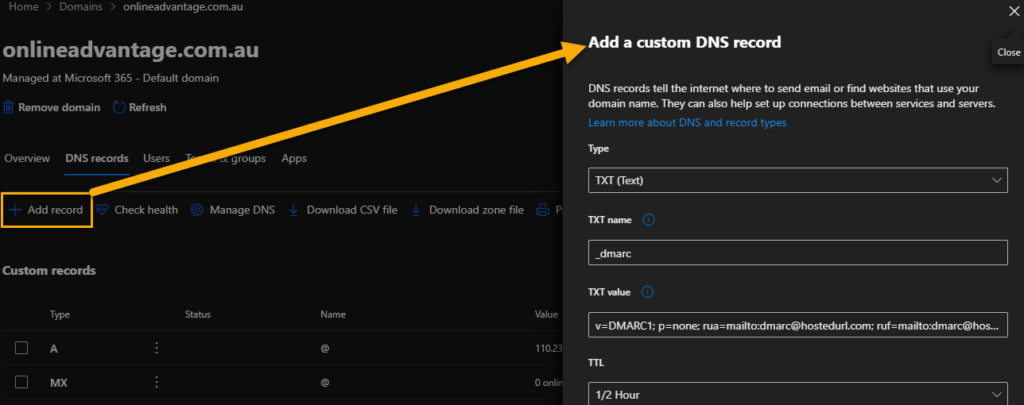DMARC is a standard email authentication method. DMARC helps mail administrators prevent hackers and other attackers from spoofing their organization and domain. Spoofing is a type of attack in which the “From” address of an email message is forged. A spoofed message appears to be from the impersonated organization or domain.
DMARC also lets you request reports from email servers that get messages from your organization or domain. These reports have information to help you identify possible authentication issues and malicious activity for messages sent from your domain.
Because Online Advantage (OA) is sending many tens of thousands of emails on behalf of our cloud-based customers it is recommended that clients have their IT support team add in a DMARK entry to the DNS of any domain used for sending email from OA. Doing so will ensure a higher success rate.
Both Google and Yahoo have announced that from February 2024 they will be checking DMARC settings for emails sent by servers that send over 5000 messages a day. Online Advantage sends in excess of this number so a DMARC entry is imperative if you are sending to Google and/or Yahoo addresses from OA.
Your DMARC record will inform others how to handle email that claims to come from your domain. As such, you will need to gain access to your domain’s DNS and publish your DMARC record there. It’s important to know that a DMARC record will live in your DNS as a text record (also known as a TXT record). For that TXT entry, the appropriate “Name” to use is: _dmarc
If you do not have a DMARC entry already in place for your domain, we suggest you have the following entry added ASAP:
v=DMARC1; p=none; rua=mailto:dmarc@hostedurl.com; ruf=mailto:dmarc@hostedurl.com; fo=1
If you’re using the Microsoft 365 cloud platform (Office 365) then you can easily navigate to the “Domains” section of the admin portal and add a custom ‘TXT’ record using the details above. Please see the screen shot example below as a guide.

For details on the Google approach to DMARC please refer to this help post provided by Google: https://support.google.com/a/topic/2759254?hl=en&ref_topic=9061731
For other DNS providers (e.g. GoDaddy, WebCentral, Cloudflare, Namecheap, DNS Made Easy etc.) we’d suggest checking their support and help portal for details on adding a TXT entry to the DNS if you don’t have any IT support people to assist.